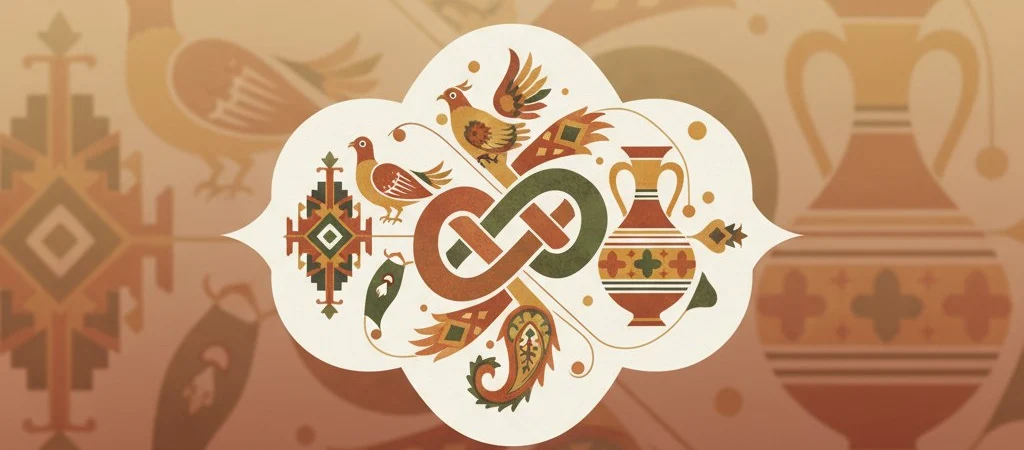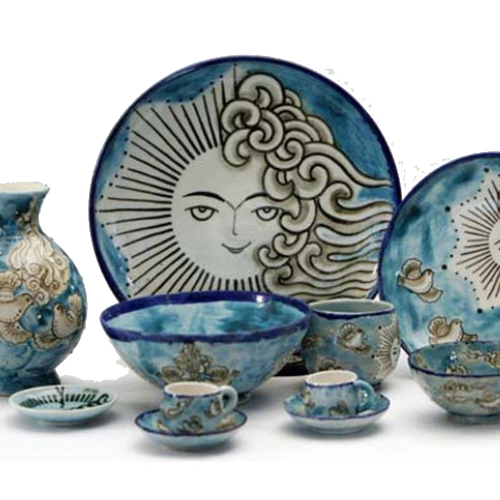
Lalejin Pottery and Ceramics



story of Hamedan pottery
Considering the several-thousand-year-old history of Iranian civilization and the many examples of these crafts preserved in museums across Iran, the significance of pottery and ceramics in this vast land becomes clear. In other words, everything displayed in these museums today is the result of the tireless efforts and accumulated experience of our ancestors over millennia. Year after year, century after century, millennium after millennium, this knowledge has been passed down from generation to generation. What we see today reflects the dedication of craftsmen who lived thousands of years ago in Iran and embodies what flowed through their minds and hearts. Throughout our country, pottery and ceramics have been widespread. In response to the needs of people and society, these crafts have taken many forms: jars, vases, piggy banks, large and small containers, decorative objects—anything you can imagine. Numerous toys and ornamental pieces have also been created. Over thousands of years, these items have met the daily needs of people living across a vast area—from India to Europe, from north to south—and have facilitated cultural and technical development through trade. Hamedan Province, particularly the city of Hamedan, has been a key center of civilization in Iran and a birthplace of the great industries of ceramics and pottery. From ancient times, it has been a hub for producing and trading earthenware and ceramic objects. Imagine, some 2,500 years ago, Hamedan was already home to the Achaemenid culture and civilization. Since ancient times, workshops and factories—both large and small—have produced the finest ceramic and pottery items.
To make unglazed ceramic vessels, all you need is high-quality, sticky clay, water, and a great deal of effort. Our ancestors created vessels from just these materials—vessels that now adorn thousands of museums and cultural centers around the world. The process begins with collecting clay from abundant local mines. Large amounts of clay were transported to workshops by hand or with the help of animals. Next, the clay was sieved and sifted to achieve a smooth, uniform, and pure texture. The purer the clay, the better the final product. Then, the clay was moistened and kneaded for days or even weeks to ensure even moisture and to remove trapped air. The better this process, the higher the quality of the final product. Sometimes this process lasted for two weeks to two months. Afterward, the clay was shaped into smaller pieces for use on the potter’s wheel or for freehand crafting decorative items. The invention of the potter’s wheel thousands of years ago brought a revolution to ceramic production. Imagine countless workshops where men, women, and children worked daily, producing thousands of clay vessels that were then exported worldwide. Once a piece took shape on the wheel, it was sun-dried for weeks. Thousands of jars, vases, pots, piggy banks, and cooking vessels were dried on hills and mountains, preparing them for firing in small and large kilns.
Before firing, some pieces were painted and glazed. Glaze is essentially a layer of glass applied to ceramic surfaces. The formula for glaze was highly complex, and unfortunately, many ancient recipes have been lost over time. Glaze was made by grinding stones and metal oxides, mixing them with water to create a liquid that could coat the vessel. Often, the piece was dipped multiple times and dried under the sun, sometimes repeating the process many times. Firing then fused the glaze to the vessel. Between layers, decorative painting might also be applied.
To prevent colors from running, a special black resin called a “liner” was sometimes used. This technique, refined over centuries, allowed vibrant multi-colored patterns to adorn ceramics and tiles, decorating homes as early as 3,000 years ago. This entire process—from shaping to glazing to firing—could take weeks or even months. After one or two final layers of glaze, the ceramic was complete, sometimes capable of lasting thousands of years. Today, these techniques are still practiced beautifully in Hamedan, sustaining a living tradition. Visitors to Hamedan often bring home a piece of local pottery as a souvenir. Many top artisans continue to produce both traditional and contemporary pieces that are displayed in galleries across Europe and other continents, often selling for high prices.
Lalejin, located 20 kilometers northwest of Hamedan, is one of Iran’s most important pottery centers. Archaeologists and historians trace its pottery tradition back around 7,500 years. Recent excavations at the Hegmataneh mound indicate that Lalejin was a major center for pottery and ceramics in the ancient Middle East. Today, approximately 80% of Lalejin’s population of 55,000 are involved in pottery and ceramics, making it more than just a profession—it is part of the town’s identity and soul. About a thousand traditional and modern workshops in Lalejin supply pottery and ceramics to over 280 stores specializing in handicrafts and ceramics. Pottery has always been one of Iran’s most beloved traditional crafts, and Lalejin exemplifies this heritage. The town, situated at an altitude of 1,731 meters, continues to thrive as a global center for pottery. Walking through its streets, one sees countless men, women, and children creating beautiful artworks and continuing the legacy of their ancestors.
It is no surprise that Lalejin is recognized as the world’s pottery capital. Thousands of domestic and international tourists visit each year, taking home pieces that embody thousands of years of skill and tradition. As the Sana Persian team, we hope to welcome you soon to Iran, Hamedan Province, the city of Hamedan, and Lalejin. We look forward to that day.
Contact Us
+989054577261